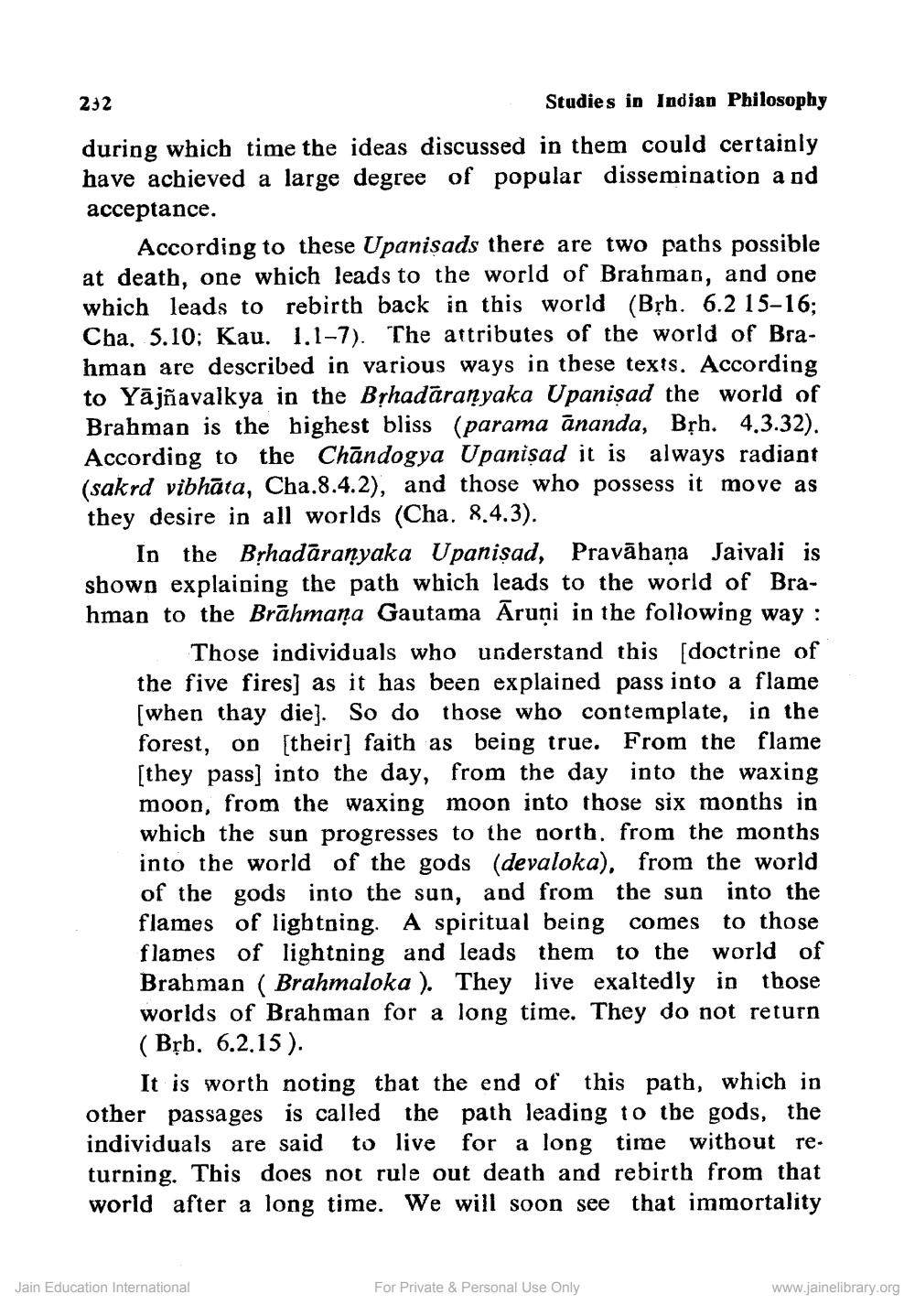________________
232
Studies in Indian Philosophy
during which time the ideas discussed in them could certainly have achieved a large degree of popular dissemination and acceptance.
According to these Upanisads there are two paths possible at death, one which leads to the world of Brahman, and one which leads to rebirth back in this world (Bșh. 6.2 15-16; Cha. 5.10; Kau. 1.1-7). The attributes of the world of Brahman are described in various ways in these texts. According to Yājñavalkya in the BỊhadaranyaka Upanişad the world of Brahman is the highest bliss (parama ānanda, Bșh. 4.3.32). According to the Chãndogya Upanisad it is always radiant (sakrd vibhāta, Cha.8.4.2), and those who possess it move as they desire in all worlds (Cha. 8.4.3).
In the Brhadāraṇyaka Upanişad, Pravāhaņa Jaivali is shown explaining the path which leads to the world of Brahman to the Brāhmaṇa Gautama Āruņi in the following way :
Those individuals who understand this [doctrine of the five fires] as it has been explained pass into a flame [when thay die]. So do those who contemplate, in the forest, on [their] faith as being true. From the flame [they pass) into the day, from the day into the waxing moon, from the waxing moon into those six months in which the sun progresses to the north. from the months into the world of the gods (devaloka), from the world of the gods into the sun, and from the sun into the flames of lightning. A spiritual being comes to those flames of lightning and leads them to the world of Brahman (Brahmaloka ). They live exaltedly in those worlds of Brahman for a long time. They do not return ( Bụb. 6.2.15).
It is worth noting that the end of this path, which in other passages is called the path leading to the gods, the individuals are said to live for a long time without re. turning. This does not rule out death and rebirth from that world after a long time. We will soon see that immortality
Jain Education International
For Private & Personal Use Only
www.jainelibrary.org




